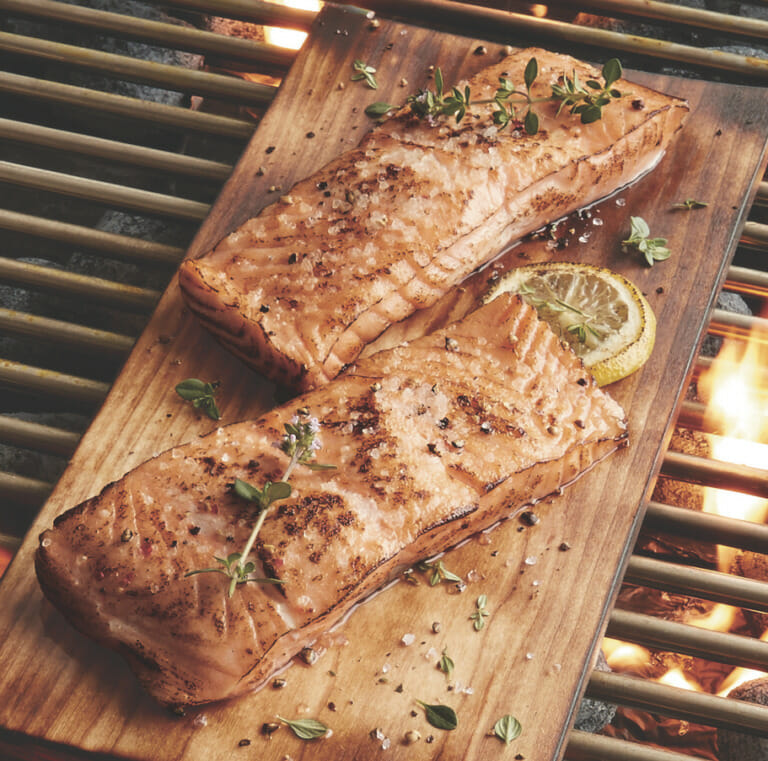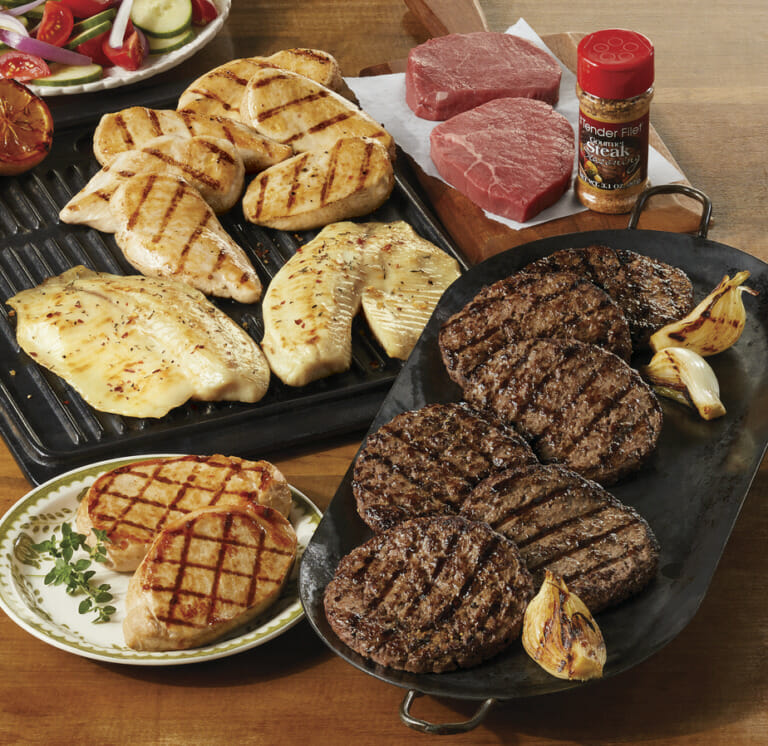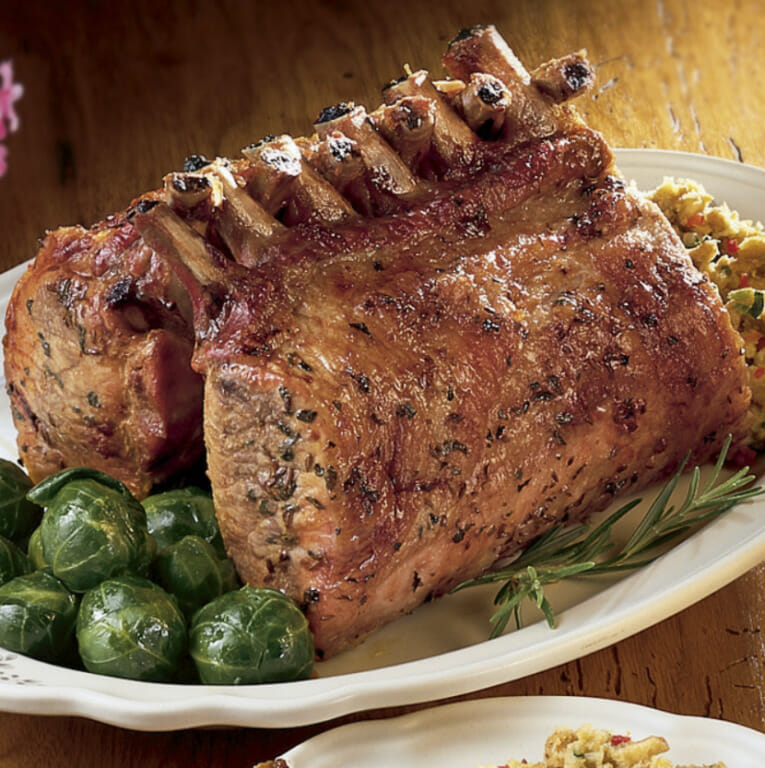How to Cook a Ham on the Grill
Ham on the grill is something most people haven’t tried. But once you learn how to cook a ham on the grill, you’ll be amazed at how easy and flavorful it is.
Easter ham—and Christmas ham, and ham for nearly any holiday—is a time-honored tradition. And like many family traditions, it is usually regarded as something not to be messed with. However, venturing outside one’s comfort zone can have many benefits. Plus, what we’re proposing here is nothing at all radical…but it can add a whole new level of flavor to this classic dinner with little extra effort, and be a welcome breath of fresh air at the same time. We’d like to make a case for cooking ham on the grill.

For many of us, winter can be pretty brutal. Easter is the holiday that more or less ushers in spring, and is the perfect time to get reacquainted with the outdoors…and your barbecue grill. Of course, if you live in an area where winter is exceptionally mild—or you’re just one of those diehard outdoor cooks—you’ll find yourself grilling your Christmas ham, too. As you’ll see, it’s really not hard at all. But first of all, you need to know the basics of cooking a ham.
How to Cook a Ham
Two words: low and slow.
Chances are the ham you buy will not be raw, so you will not be starting from scratch. Many hams are only partially cooked (to an internal temperature of about 137 degrees F), to kill any bacteria. A fully cooked ham has been brought to an internal temperature of 148 degrees for greater convenience and tenderness.
If you’re using the traditional oven method, this article will teach you how to cook a ham. Be sure to use a meat thermometer to guide you. Stick the thermometer in the thickest portion of the meat, without touching the bone. When reheating a fully cooked ham, it is considered done at 140 degrees.
Be sure to let the ham rest 10 minutes after removing it from the oven; the internal temperature will continue to rise a few degrees and the juices will reabsorb into the meat.
These basic temperature guidelines apply to any method of cooking a ham…but for maximum flavor, learn how to cook a ham on the grill.
Ham on the Grill
Cooking a ham on the grill has its benefits. As mentioned before, it’s a great way to get out of the house on what hopefully will be a nice spring day. And you’re also taking some of the preparation and mess out of the house. When you cook your ham on the grill, you free up valuable oven space in the house for preparing a casserole, roasting vegetables, or baking a dessert. It’s also an excuse for splitting up the cooking chores. The most important benefit, however, is flavor.
Even though most of the hams here in America are smoked, cooking a ham on the grill adds a new dimension and depth of flavor that an oven-baked ham cannot match. Even a ham done on a gas grill is substantially improved. And just as there are different types of grills, there are two basic methods for ham on the grill.
Grilling Ham on a Rotisserie
If you have a grill equipped with a rotisserie, you can take advantage of the even heat it provides. Rather than leaving one surface closer to the heat source(s), the rotisserie slowly turns the ham to allow all sides to cook and brown evenly. Most large gas grills are set up to accept a rotisserie, either original equipment or from an aftermarket manufacturer.
Rotisseries can be inexpensive and are easy to set up, but they can be a little tricky to use. A ham, by nature, is irregularly shaped…though it actually helps that the bone is off-center because it makes it easier to place on the spit. Point the sharp end of the spit at the center of the butt end of the ham, on the thicker side just off the bone, then run it along the bone through the length of the ham. The ham’s weight should be centered on the spit for balance.
The National Pork Board has a fantastic Mediterranean-inspired recipe for Grilled Ham with Lemon-Orange Glaze. Because lemon marmalade can be hard to come by, we used orange marmalade and lemon juice instead of lemon marmalade and orange juice; it still turned out beautifully. This particular recipe was designed to be cooked directly on the grill with indirect heat rather than on a rotisserie, but either method will work just fine. Also, note that a rotisserie is suitable only for a whole ham, preferably bone-in. You will not want to use this method for a spiral-sliced ham because it will be hard to keep intact on the spit.
Cooking a Spiral Ham on the Grill
A spiral-sliced ham is probably the easiest ham you will ever serve. This ham has often been fully cooked and glazed before being rotated against a sharp blade in spiral fashion to produce perfect, even slices. Not only does this allow the flavorful glaze to penetrate all the way to the bone; it also eliminates having to know how to carve a ham. (Besides teaching you how, this article also gives you tips on creating an Easter ham dinner menu.)
The spiral slicing also allows heat to penetrate, decreasing cooking time. But even though it’s not advisable to cook a spiral-sliced ham on the spit, cooking this ham on the grill is very easy.
Simply prepare the grill for indirect heat. With a charcoal grill, this will involve using special racks to keep the coals off to both sides; for a gas grill, you simply turn off a burner on one side or in the middle.
Place the spiral-sliced ham in a foil pan to keep it moist by catching the juices that otherwise would drip out onto the fire. (Also, since ham glazes are sugary, this will prevent the black, sticky mess that will result from burning these sugars.) Place the foil pan on the cool portion of the grill and bake it until it’s heated through. Again, use a meat thermometer so you know when it’s reached the proper internal temperature (140 degrees). Because the ham is spiral-sliced, it may take less time than a normal ham, and it will practically serve itself.
Ham on the grill is a fantastic way to celebrate Easter, Christmas, or any other occasion where your family enjoys this special treat…and because it’s been grilled, that extra smoky flavor adds a little pizzazz to the soup you’ll make with the leftovers!



